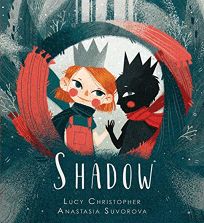A recent and welcome mini-trend we’re seeing is the art of featuring children who recognize and respond appropriately to adult sadness. Since virtually all small children do have significant adults in their lives and since all of us as humans of any age sometimes experience sadness, the real life reality is that kids do see adults who are feeling sad or, not much less frequently, even depressed. Instead of sweeping these occasions under the cultural rug of saying nothing, these picture books offer positive models for kids in such times.

From Pajama Press, Paula Knows What to Do, by author/illustrator Sanne Dufft, gives very young readers access to the topic of parental sadness and the child who takes on the project of helping him through a tough emotional time by using her imagination. Dufft herself is an art therapist and the story offers the opportunity to open a conversation between child and caregiver about situations like the one Daddy and Paula have encountered, a loss that leads to both grief and emotional growth.
Forthcoming from Tiny Owl is a magical realism-touched story that will touch both kids and adults luck enough to discover it. Felix After the Rain, by Slovenian-Italian author/illustrator Dunja Jogan, has won PEN’s Translates Award for Olivia Hellewell’s work of moving the spare text from Italian so that English language readers can discover its warmth.
Lantana Publishing’s Shadow, by Lucy Christopher and illustrated with stunning art by Anastasia Suvorova, melds allegory with authenticity to present older picture book readers with the experience of parental depression. This condition can arrive and depart, potentially adding layers of uncertainty to their children’s awareness of it. As the American Library Association’s review journal Booklist notes in its review:
This soft-spoken story can be anything from a simple, lovely, modern fairy tale to a stunning allegory about overcoming fear and how a parent’s depression can affect a child. Suvorova expertly incorporates stark, contrasting whites and blacks with sunset reds and oranges for her illustrations. With both words and supporting artwork, there’s a darkness that steadily creeps into the story … but the creative team skillfully lifts the story back into a place of safety and light by the end.

It’s cause for celebration indeed that children have increasing access to picture books that support their experiences with their caregivers’ demonstrative episodes of sadness. In every case here, too, the story and the art go well beyond having instructive value. They are great books to discover even when no one is feeling blue.